Sameer Ali
Foraging behaviour of Demon butterflies (Family: Hesperiidae) on Argyreia involucrata (Family: Convolvulaceae) PDF Sameer Ali |
||
| Back | Next |
Demon butterfly with hooked antennae at the tip belongs to the sub-family Hesperiinae of the family Hesperiidae, which is the third largest family of butterflies in the world (about 3,650 species) and about 320 species in India. This family is popularly known as the “Skippers” and constitutes about 21% of the Indian butterfly fauna. Peninsular India reports 90 and Western Ghats complex 81 species (Gaonkar, 1996, Kunte, 2000). The present communication reports the foraging behaviour of demon butterflies belonging to genus Notocrypta and Udaspes. They are shade-loving and predominates in moist deciduous to semi-evergreen to evergreen forest areas. These butterflies are heterogenous group with varied appearances according to the prevailing environmental conditions. Notocrypta curvifascia (Restricted Demon) is a medium sized butterfly, with a wing span of 38-50 mm, which is black above and dark brown below. Discal band in Upper forewing (UPF) not continued to costa. UPF with apical dots and with white scaling on the apical part of the forewing (FW) termen and on the terminal and middle portions of the hindwing (HW) (Figure 1).
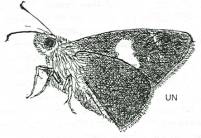
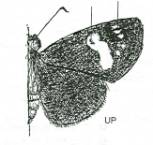
Fig 1: Restricted Demon (Notocrypta curvifascia) (Kunte, 2000)
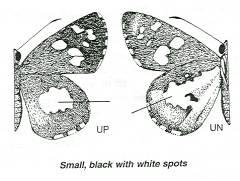
Fig 2: Grass (DemonUdaspes folus) (Kunte, 2000)
Foraging behavior of Notocrypta curvifascia and Udaspes folus was observed between 1130 – 1230 h IST on 22 nd December 2004 near Mastimane (14°26'30''N and 74°38'30''E, 28m above mean sea level) in Kumat taluk, Uttara Kannada district of Karnataka state. Butterflies visited Argyreia involucrate flowers thrice during this period. Both the species before landing on the flower flew vigorously around the plant and later sat on the corolla lip. In this posture, they opened their coiled mouthpart (Proboscis) and slowly entered into the corolla tube.(Figure 3)Foraging time was 120±30 seconds (range: 60- 180 sec) for N. curvifascia , and 150±30 (range: 120 – 180 sec) for U. folus. After foraging, they slowly came out of the corolla tube and sat for few seconds on the corolla lip, before they flew away. In this process, they carried pollen grains on their head, proboscis and some parts of wings. (Figure 4)
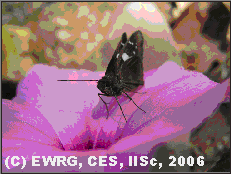
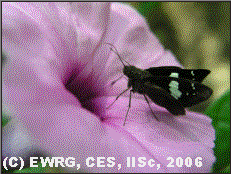
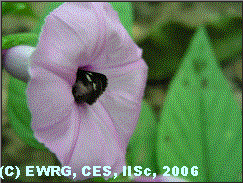
This flower has long corolla tubes and deep-seated nectar glands requiring pollinators to have long proboscis. Long proboscis observed in Hesperiidae is attributed to the co-evolution with flowers having long corolla tube (Kunte, 2000). This highlights host specificity and mutuality between A. involucrata with N. curvifascia and U. folus , with the plant providing nectar to the pollinators with long proboscis, which in turn facilitate pollination.